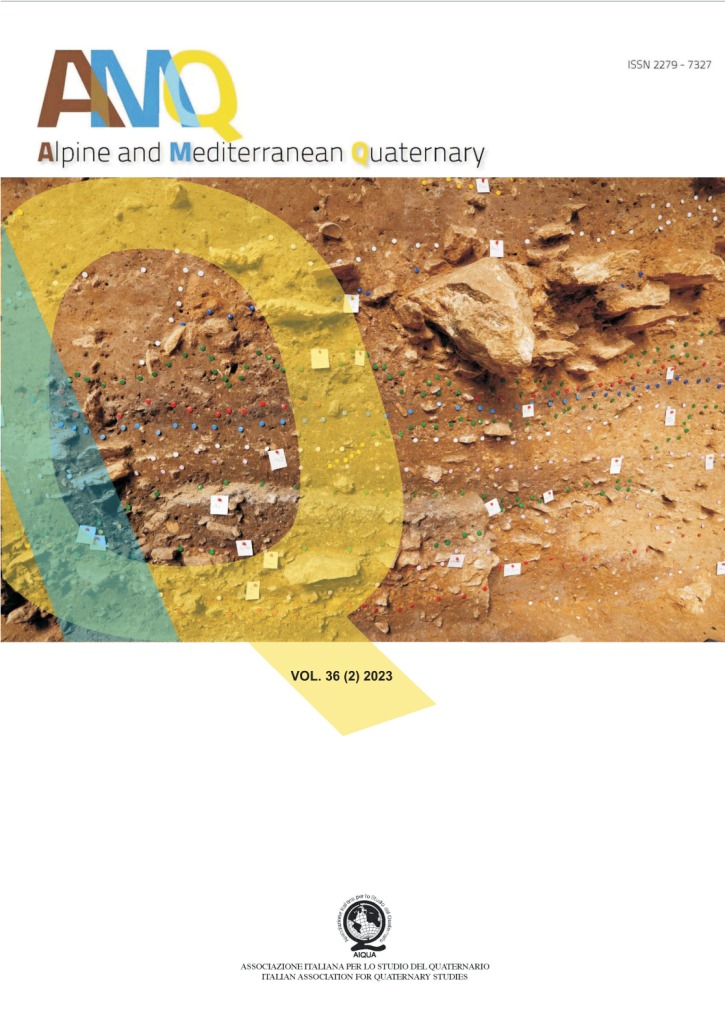The Early and Middle Pleistocene glaciations in the Alps
Main Article Content
Abstract
The Alps were hosted extensively glaciations during many Pleistocene cold stages. New stratigraphic and geochronological data gathered in the last decade provided depicting the Early Pleistocene glaciations and their record is continuously updated. The onset of major glaciations since the Late Matuyama (MIS 22-20) is better recognized in many end-moraine systems in the southern side of the Alps. The updated chronology of the Middle Pleistocene phases indicates an improvement of the knowledge about the penultimate glaciation (MIS 6) and the evidence that every sector has had its own most extensive glaciation in a different time span. The dissimilar architecture of the end moraine systems suggests a different behavior of the glaciers from one cold stage to the others. The development of the largest glacier networks with associated piedmont lobes (i.e., Adige, Adda and Inn) required abundant snow supply promoted by the southerly circulation, like in the LGM. For the systems with the high accumulation areas (i.e., Valais, Dora Baltea, Rhine-Reuss and Ticino-Toce) a larger number of glacial units was recorded likely because these were more sensitive to every circulation regime interesting impacting the Alps, whether northwest or south dominated. The Alps remain the most studied mountain range with respect to Quaternary glaciations, thereby providing a unique and valuable resource.
Article Details
Issue
Section

This work is licensed under a Creative Commons Attribution-NonCommercial-NoDerivatives 4.0 International License.
The Author grants usage rights to others using an open license (Creative Commons or equivalent) allowing for immediate free access to the work and permitting any user to read, download, copy, distribute, print, search, or link to the full texts of articles, crawl them for indexing, pass them as data to software, or use them for any other lawful purpose.

